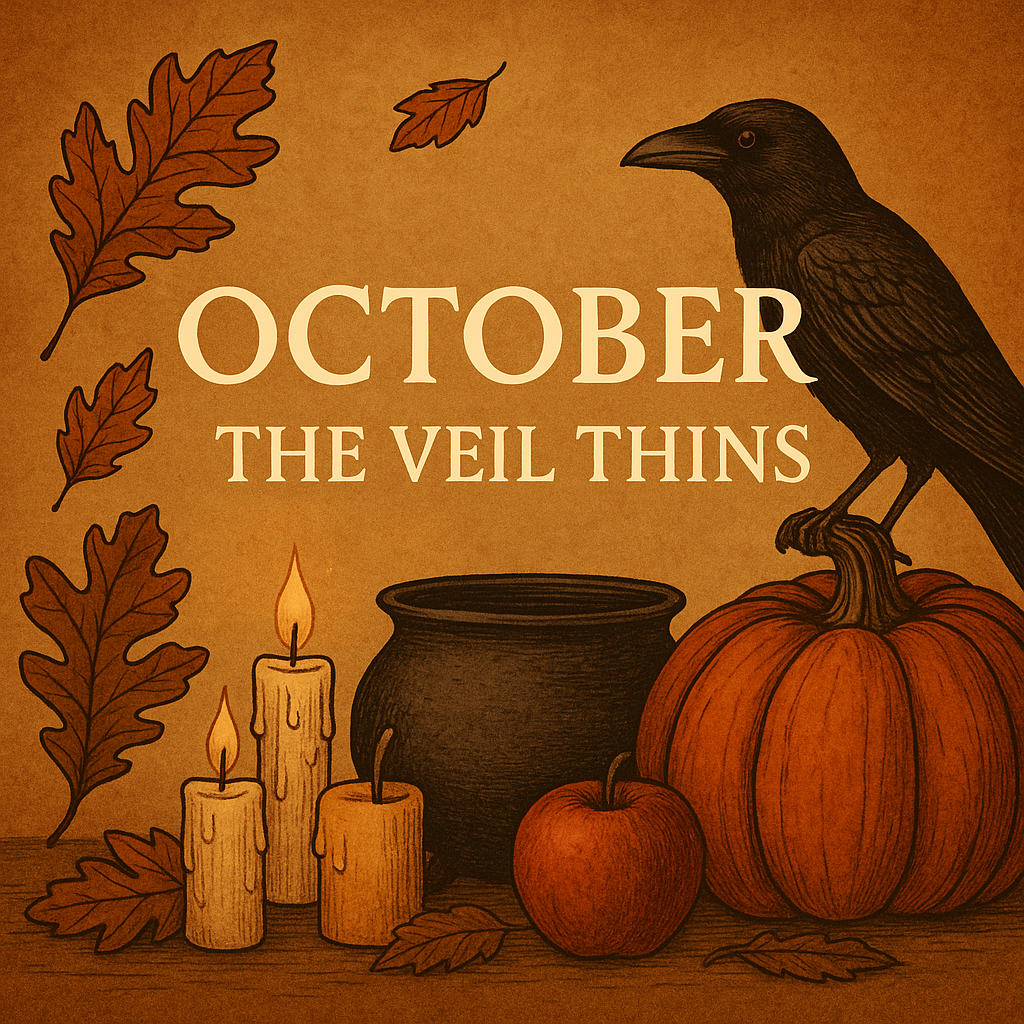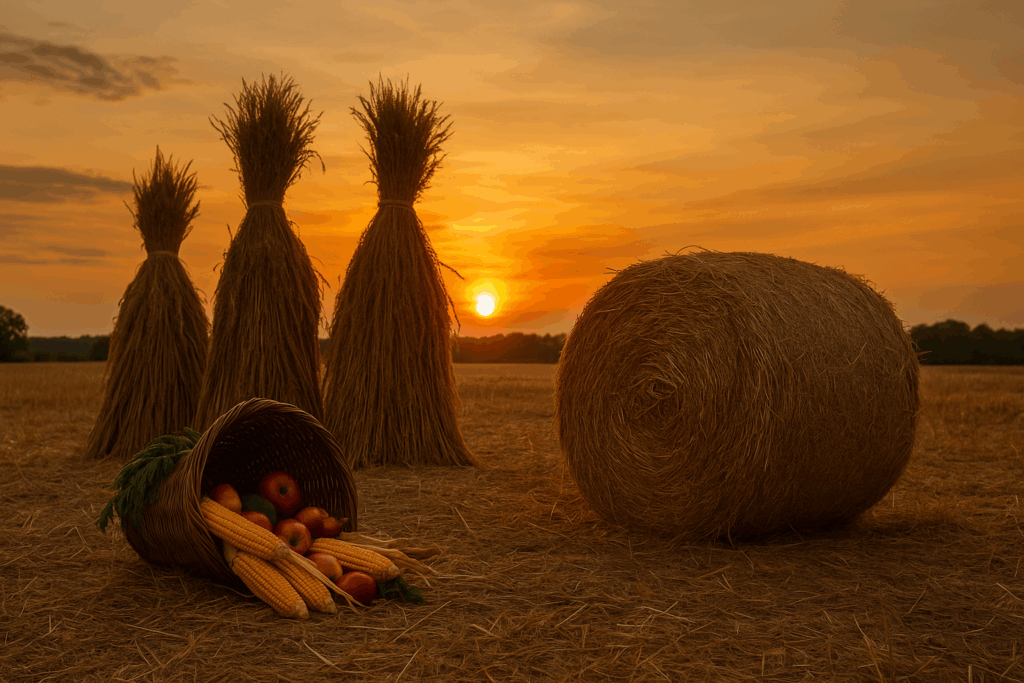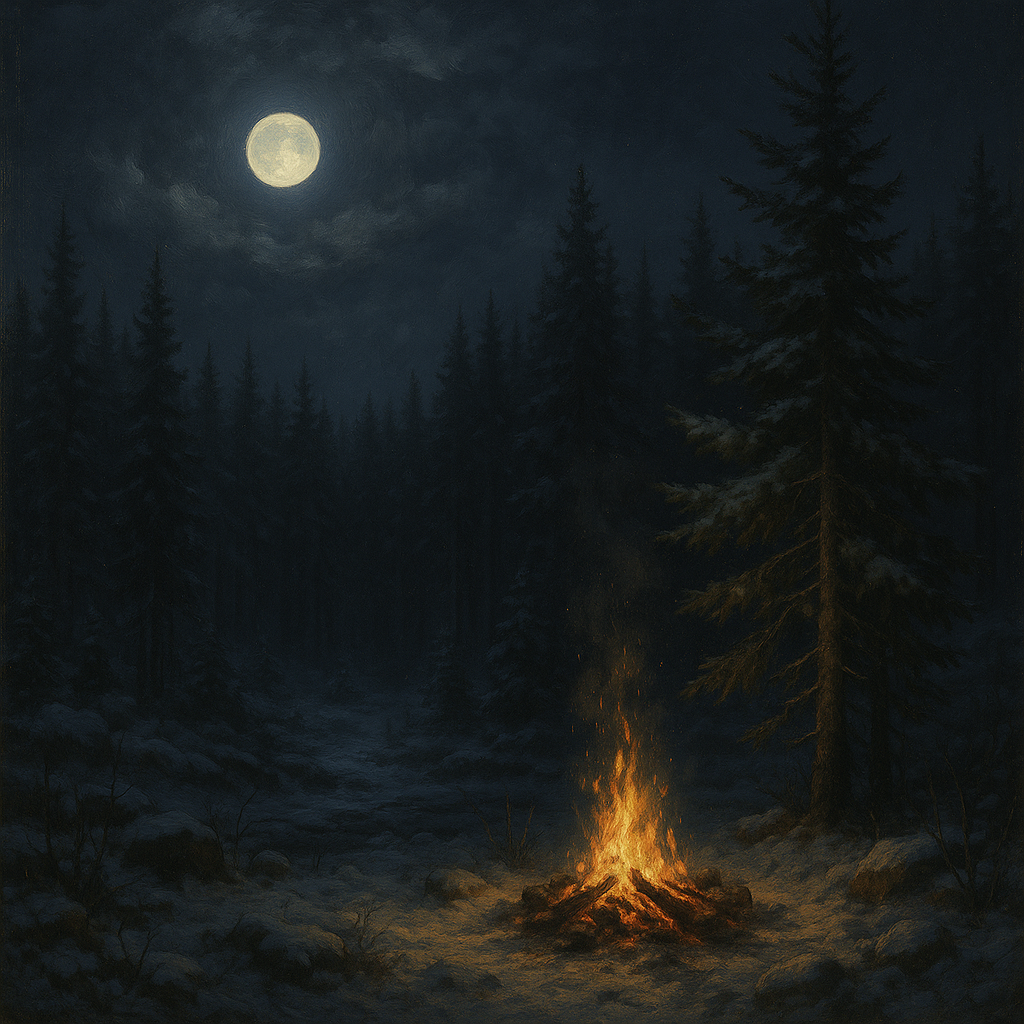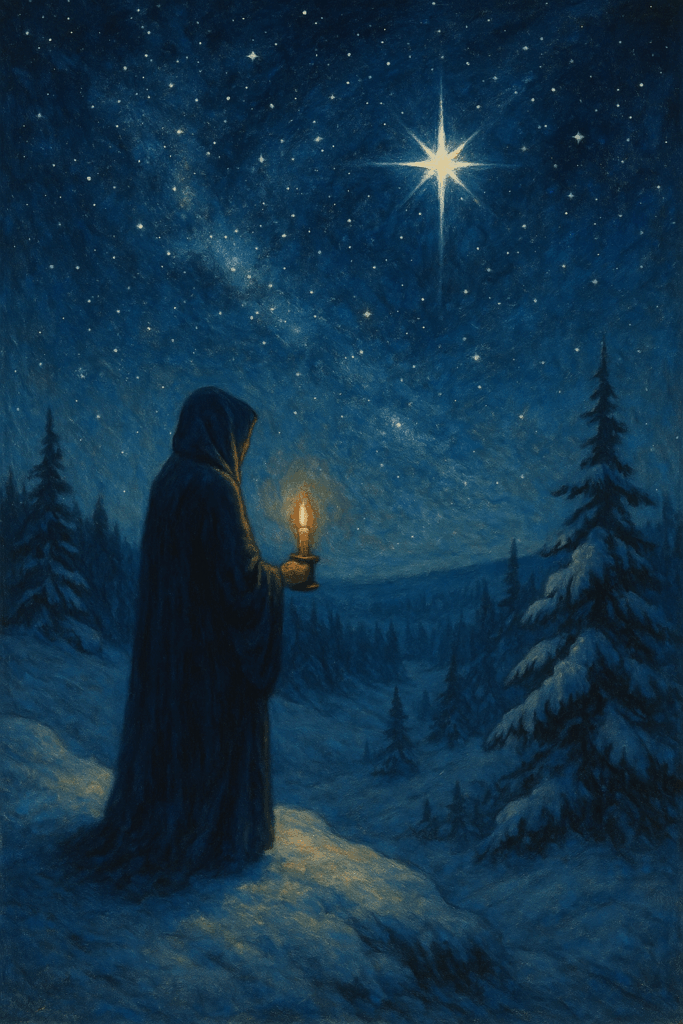🌾 October 10 – Under the Harvest’s Shadow

Honoring the final fruits and spirits of the land before the frost.
By the tenth day of October, the sun feels like a dying ember — still warm, still golden, but fading. The fields grow quiet under its soft light, the once-lush greens now turning to russet and gold. There is a stillness that comes after the final harvest, a hush that settles over the land like a sigh. The barns are full, the baskets are emptied, and the hands that once toiled now rest in gratitude. Yet beneath this peace, something stirs — a shadow that lengthens with the waning sun.
This is the shadow of the harvest — the spirit of endings, the whisper of what is lost in the act of gathering. It is not a shadow of malice, but of mystery. For every abundance demands a reckoning; every gift asks for a return. When we reap what we have sown, we also cut down what has lived. The corn that bends beneath the sickle, the apples plucked from the branch, the grain ground into bread — all are sacrifices that feed our continuation.
The shadow of the harvest reminds us that even in our gratitude, there must be reverence for what was given up.
The Silence of the Fields
If you walk the fields at dusk, when the sun melts into copper light, you can feel the land exhale. The air grows heavy with the scent of soil, hay, and woodsmoke. It is the scent of completion — the smell of a cycle fulfilled. Yet in that scent, too, is a faint ache. The earth has spent itself. It has offered all it had, and now it begins to draw inward.
This is the time to honor the spirits of the land — the genii loci, the harvest gods and goddesses, and the ancestors who once tilled this same soil. In ancient traditions across Europe and beyond, the last sheaf of grain was never taken lightly. It was the spirit of the crop, the very soul of fertility. To cut it was to close the cycle, to symbolically release the energy that had nourished life. It might be bound, shaped into a corn dolly, and kept through the winter as a charm of protection and promise — a vessel of continuity between harvests.
Perhaps tonight, you might craft your own symbol of gratitude — a small token made of straw, leaves, or even kitchen herbs. It need not be elaborate. The magic lies not in perfection, but in intention. Whisper your thanks into it. Bless it as a guardian of your home until spring’s return.
The Duality of Abundance
Harvest time carries a paradox — it is a season of fullness and of loss, of joy and of mourning. The fields gleam with fruit, yet the plants that bore them die. The cellar is stocked, but the gardens grow bare. Even as we feast, the frost draws nearer.
Spiritually, this duality mirrors our inner lives. Every harvest we experience — be it a personal success, creative fulfillment, or spiritual breakthrough — arrives with its own shadow. Something within us must be surrendered to make space for what we’ve gained. The universe moves in this rhythm: a giving and a taking, a continual turning of the wheel.
To live in harmony with this truth is to live in grace. It is to understand that the harvest shadow is not punishment, but balance. When we take from the earth, we must give back — through offerings, gratitude, or mindful living. When we receive abundance, we must share it, knowing that hoarding abundance leads to spiritual stagnation.
It is no coincidence that festivals of the harvest — from Mabon to Samhain — center around community, feasting, and giving. To honor the harvest shadow is to recognize interdependence. Our abundance is born from the earth, from time, from ancestors, from unseen forces that move through every seed and rainstorm. To forget this is to lose our sacred place in the web.
Ritual of Gratitude and Shadow
As the daylight fades, light a single candle on your altar, or on your kitchen table — the hearth being the ancient center of gratitude. Surround it with symbols of the harvest: apples, grains, a loaf of bread, a glass of cider or wine. If you have a garden, bring in a handful of soil. If not, even a stone or dried leaf from outdoors will do.
Close your eyes and take three deep breaths. Feel the weight of the season — the fullness of all you have gathered this year, tangible and intangible alike. What have you created, learned, or nurtured? What abundance has found its way to you?
Now, turn your awareness toward what was lost in the process. What did you outgrow? What fell away to make this harvest possible? Perhaps it was an old belief, a relationship, a version of yourself that no longer fits. Let the shadow of the harvest rise in your mind — not as sorrow, but as acknowledgment. Every harvest casts a shadow, and every shadow is sacred.
Speak aloud words of thanks — not only for the gifts, but for the sacrifices.
“For what I have gathered, I give thanks.
For what has been taken, I give honor.
For what is yet to come, I give trust.”
Then let the candle burn for a while, symbolizing the lingering warmth of the sun even as darkness grows. When you extinguish it, whisper your gratitude into the dark. The earth will hear.
The Spirits of the Land
This night belongs to the spirits that dwell beneath the soil. The old ways teach that they are not abstract forces but conscious presences — guardians of fertility, protectors of the boundary between human and nature. In Celtic lore, the harvest was the time to leave offerings at field edges or crossroads — bread, milk, honey, or cider — gifts for the Good Neighbors, the unseen ones who ensure that the land remains fertile.
You can continue this ancient practice simply. Leave a small bowl of food outdoors, or pour a libation of drink onto the ground. Whisper your gratitude to the spirits who labor unseen, to the worms that turn the soil, to the wind that carries pollen, to the rains that softened the seed. These offerings are acts of spiritual ecology — acknowledgments that our survival depends on countless forces beyond our control.
If you listen closely afterward, you may feel something stir — a warmth in the air, a hum in the quiet. That is the land answering.
The Final Feast
In the agricultural calendar, this day would have been one of gathering and of feasting — the final great meal before winter stores were sealed away. It was not simply a celebration of plenty, but a recognition of mortality and continuation. The bread that sustained the village through winter was made from grain that had died. Thus, every harvest feast was also a ritual of resurrection — life feeding on death, death sustaining life.
When you eat tonight, whether alone or with loved ones, eat slowly. Taste with reverence. Each bite is part of this same sacred cycle. The apple carries the memory of the tree, the grain the whisper of the sun. Nothing is mundane in the harvest — all is sacred sustenance.
If you wish, you may dedicate your meal with a simple blessing:
“With this food, I honor the life that sustains life.
May the shadow of the harvest teach me humility,
and may my gratitude return to the earth a thousandfold.”
Beneath the Frost’s Edge
The frost is coming — not yet, but soon. The nights lengthen, and the stars return to sharper brightness. In the old belief, this was when the earth’s breath turned inward, when the spirits of the crops sank back into the soil to sleep. We, too, are called inward.
The harvest shadow is a gentle guide, reminding us to rest, to take stock, to prepare our hearts for the darker days. It teaches us to value what remains, and to carry light within when the outer world grows cold.
To stand under the harvest’s shadow is to accept the whole of life — not only its sweetness, but its surrender. It is to know that abundance and loss are lovers who walk hand in hand across the fading fields. And it is to understand that the shadow is not an ending, but a promise: that what falls to the ground will rise again in time, reborn in spring.



